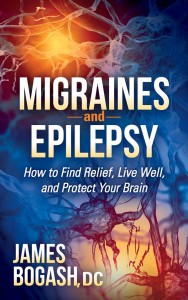Every migraine sufferer wants that miracle drug, treatment or cure that will provide chronic migraine relief. Personally, I don’t think this will ever happen.
Headaches are too diverse and too complex to be treated with a single approach. The only exception to this is those people who have been incorrectly diagnosed with migraine when what they really have is an isolated “structural headache.” This is my term for a headache that comes from the structures of the head and neck. These headaches will respond incredibly well to treatment from a chiropractor who also fully understands how to treat the soft tissues involved in addition to adjusting the cervical spine.
But even patients with structural headaches are likely to have migraine-headaches overlaid upon the structural headaches. This means that structural treatment alone is not going to be enough in the long run. It may provide some relief in the short term, but ultimately the headaches will come back until you address the other factors.
Among other things, fats play a big role in how your brain works. If you remember way back to high school biology class, all of our cells are made up of a fatty cell membrane. And this cell membrane is a critical factor in determining what comes into the cell and what leaves the cell. This includes building blocks to make proteins in the cell as well as messages.
A healthy cell membrane makes sure that messages that are supposed to make it in get in and also make sure that messages that are NOT supposed to get into the cell stay out. This is why dietary choices that emphasize intake of healthy fats (raw nuts, seeds, wild caught fish, wild game and olive oil) and avoid the intake of unhealthy fats (corn oil, soybean oils and hydrogenated oils) are good the for brain. This applies whether we are talking about chronic migraine headaches, seizures, Alzheimer’s dementia, Parkinson’s disease or cognitive decline.
Fats play a critical role. Which fits into the results from this particular study. In it, researchers looked at the levels of a particular class of cell-membrane fat called sphingolipids in a group of 88 women with episodic migraine. For those of you a little rusty in Jeopardy’s “I’ll take brain fats for $500, please, Alex” sphingolipids are a specific type of waxy fat found in high concentrations in the cell membranes of your brian cells. In general, higher levels means that your brain cells are going to be more stable. In addition, certain sphingolipids play a critical role in sending messages within the brain cells themselves.
With this in mind, here’s what they found:
- Total ceramide and dihydroceramide levels were lower in those with episodic migraine.
- Each standard deviation increase in total ceramide and dihydroceramide led to a 92% lower risk of experiencing migraines when compared to a control group.
- In addition, every standard deviation increase in the sphingomyelin species C18:0 led to a massive 428% higher risk of experiencing migraines.
- The same was true with the sphingomyelin species C18:1, leading to a 293% higher risk.
So what does all of this mean? Other than the fact that I apparently didn’t pay enough attention in biochemistry?
First of all, higher sphingomyelin levels have been consistently shown in prior studies to be linked to prediabetes. This fits in incredibly well with the concept that prediabetes is very bad for the health of your blood vessels and the unhealthy blood vessels are the key player in the development of migraine headaches.
In addition, ceramides can be converted into sphingomyelin. That would lead to lower levels of ceramides (increasing risk of migraines) and higher levels of sphingomyelin (again leading to increasing risk of migraines). It all seems to fit.
While scientists are still trying to figure out what this all means, I would venture to say that this study again links the poor blood vessel health of prediabetes to chronic migraine headaches. And an anti-diabetic diet will have huge payoffs when it comes to chronic migraine relief.

